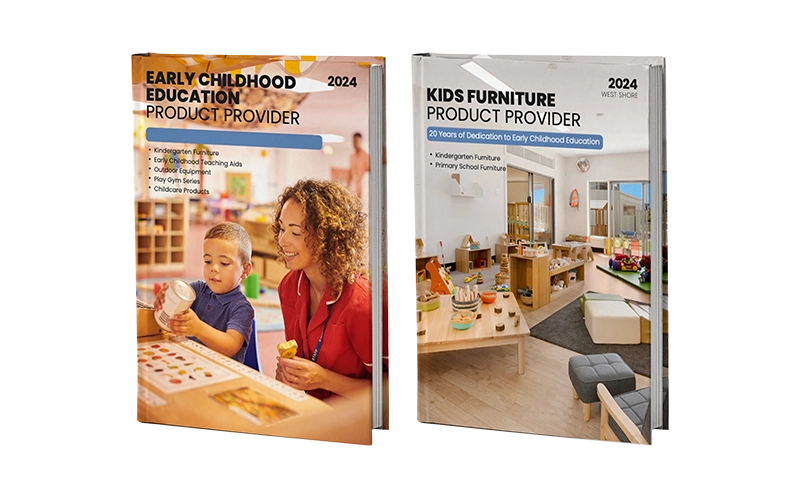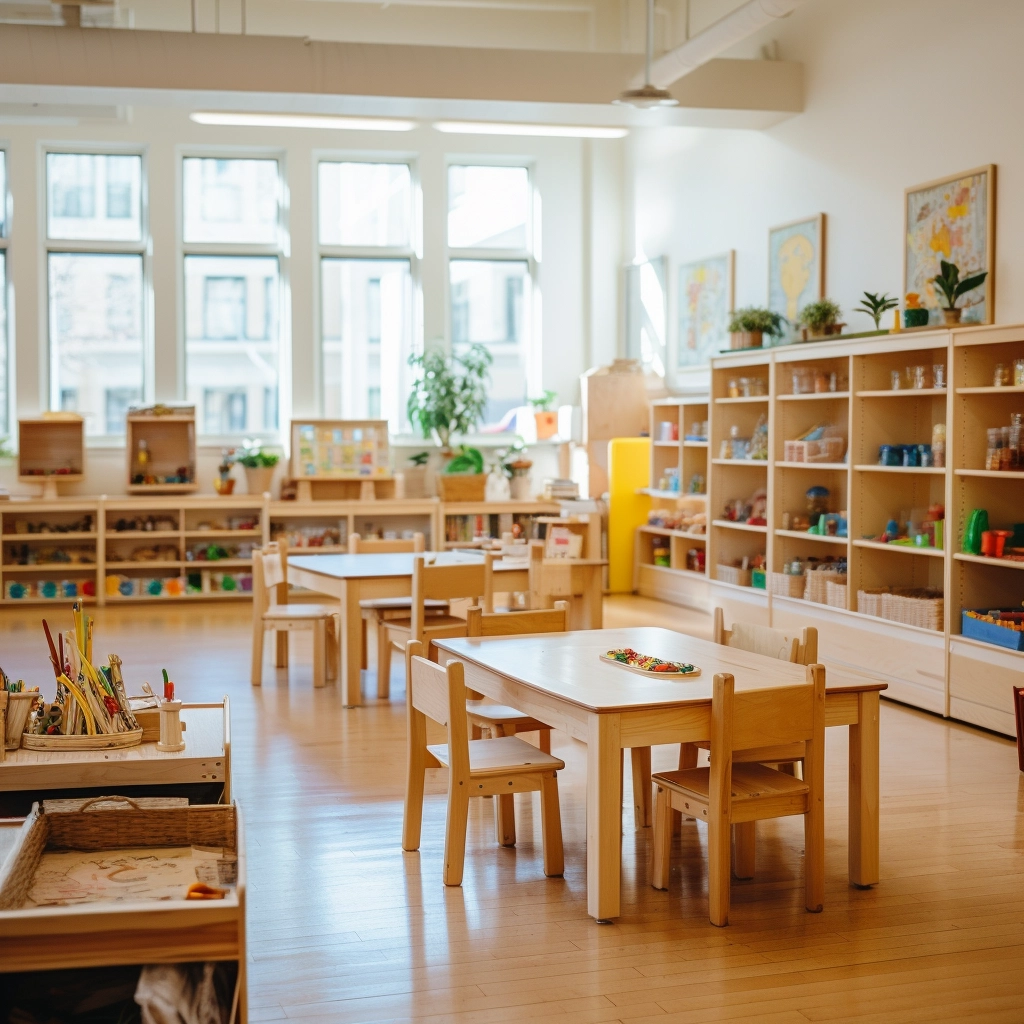What makes a preschool classroom design truly supportive of young children’s growth? Is it the cheerful colors, the child-friendly furniture layout, or the thoughtful arrangement where every corner invites children to play and learn? Designing an adequate space goes beyond decoration—it’s about crafting an environment where children feel safe, engaged, and free to explore.
In 2025, educators must carefully consider essential Preschool Classroom Setup factors to achieve a balanced space that supports safety, active learning, and flexibility. A well-designed classroom takes into account how children move, interact, and grow—encouraging independence, social development, and natural curiosity through purposeful design choices.
This article explores the six most important elements of modern preschool classroom design, helping you build a learning environment that meets the needs of both children and teachers.

幼稚園の教室を良い環境にするにはどうすればよいでしょうか?
「環境は第三の教師です。」— レッジョ・エミリア・アプローチの創始者、ロリス・マラグッツィ。
幼児教育において、教室は単なる背景ではなく、子どもの学習過程における積極的な参加者です。よく設計された幼稚園の教室は、優しいガイドのようなものです。言葉ではなく語りかけ、プレッシャーをかけずに子どもを誘い、説教することなく教えます。
棚、ラグ、そして隅々まで、好奇心、協力、そして自信を静かに育む空間を想像してみてください。成長のために整えられた庭園のように、幼稚園の優れた環境は、子どもを圧倒するのではなく、育むものです。子どもたちに自由に動き回れる環境、安全に探索できる環境、そして成長していくための環境を提供します。
このバランスを実現するために、教育者は幼稚園の教室環境における重要な要素、つまり空間を機能的で刺激的なものにする基礎となる要素を慎重に検討する必要があります。以下のセクションでは、幼稚園の教室を学習と子どもの成長が共に豊かに育まれる場所にするための6つの重要な要素について考察します。
幼稚園教室のレイアウト要素1:物理的なスペース
The physical space in a preschool classroom is not merely about square footage—it is the architectural foundation of a child’s learning journey. A well-designed layout does more than organize furniture; it shapes how children move, interact, focus, and explore within the environment.
A practical classroom layout balances openness and boundaries. Children should have enough room for indoor activities—such as block play, circle time, and dramatic play—while still experiencing a sense of structure through clearly defined zones. For example, large open spaces encourage collaboration and group exploration, while smaller, bordered areas like a reading corner or art station promote focus and calm.

Flexibility is key. Incorporating lightweight, movable furniture allows teachers to adapt the space for different purposes throughout the day. A classroom that can transition smoothly from active movement to quiet reflection supports a wide range of learning styles and energy levels.
Design also plays a role in managing noise levels and acoustics, ensuring that the environment remains calm and conducive to focused learning. Moreover, natural light and access to outdoor learning spaces can expand the sense of space and bring in sensory richness that deepens engagement.
In short, the physical environment becomes an active facilitator—encouraging independence, guiding behavior, and supporting developmentally appropriate learning throughout the day.
幼稚園教室のセットアップ要素2:装飾と視覚的な魅力
Decorating a preschool classroom is not just about making it look attractive—it’s about creating an intentional, stimulating environment that supports learning and emotional well-being. As an essential Preschool Classroom Setup Factor, thoughtful decor can spark creativity, encourage exploration, and help children feel connected to their space.

Color and texture significantly influence how children engage with their surroundings. Bright, cheerful tones can energize the room and foster a welcoming atmosphere, while natural hues and soft textures help create a calming balance. Incorporating a mix of both allows different areas of the classroom to serve distinct purposes—some vibrant and active, others quiet and soothing.
Visual elements should serve both aesthetic and educational purposes. Alphabet charts, number lines, visual schedules, and thematic bulletin boards offer visual reinforcement of key concepts. Adding maps, seasonal displays, or learning posters turns blank walls into meaningful learning tools.
Decor should also be personal and purposeful. Featuring children’s artwork, family photos, or classroom projects promotes a sense of ownership and belonging. These visual displays affirm each child’s value and contributions to the classroom community.
In short, Preschool Classroom Setup decisions about decor should balance beauty, function, and meaning—creating a visually rich space that nurtures imagination and learning every day.
幼稚園教室の環境要素3:年齢に適した家具と設備
Choosing age-appropriate furniture and equipment is essential for creating a classroom that supports both safety and development. Preschoolers require furnishings that match their physical size, developmental abilities, and growing need for autonomy. Every chair, table, and shelf should contribute not only to comfort but also to learning and independence.

Well-designed preschool furniture should be low in height, sturdy、 そして free of sharp edges. Tables and chairs should allow children to sit with their feet flat on the floor and arms resting comfortably, promoting proper posture and reducing fatigue. Storage units and shelves must be within easy reach, encouraging children to access and return materials independently—an essential part of building responsibility and routine.
Montessori-style furniture is a popular choice in early childhood settings, as it emphasizes child accessibility and functional simplicity. Open shelving, child-sized sinks, and light, movable pieces help create an environment where children feel in control of their learning space.
When it comes to equipment and materials, selections should align with children’s cognitive, sensory, and motor skill development. Items such as tactile toys, manipulatives, child-safe art supplies, and simple tools like scissors or brushes should be safely usable without constant adult assistance.
In short, appropriate furniture and equipment do more than fill a room—they empower children to move, choose, and participate in daily activities with confidence and ease.
Preschool Classroom Setup Factor 4:Safety and Accessibility
A critical Preschool Classroom Setup Factor is ensuring both safety and accessibility throughout the learning environment. Young children thrive in spaces where they can move freely, explore confidently, and engage with materials without unnecessary risks.

To ensure safety, classrooms should be free of tripping hazards, with walkways kept clear and open. All furniture should have rounded edges and be made of non-toxic, durable materials. Electrical outlets must be covered, and heavy items should be securely anchored. Regular safety inspections help maintain a hazard-free space and ensure compliance with early childhood safety standards.
Accessibility is equally essential. Young children should be able to reach learning materials, use furniture, and navigate between activity zones without adult intervention. This means providing low, open shelves, step stools, and marked paths. Doorways, bathrooms, and sinks should accommodate all learners, including those with mobility challenges.
Adequate supervision is also part of this Preschool Classroom Setup Factor. Teachers should be able to see every corner of the room without obstruction, allowing for both freedom and guidance. Low dividers and open layouts support clear visibility while still creating defined learning zones.
By prioritizing both safety and accessibility, educators create an inclusive and secure environment where children are free to explore, take initiative, and participate fully in daily activities—laying the foundation for confident and independent learning.
幼稚園教室の配置要素5:学習エリアの整理
整理整頓された教室は、予測可能で、落ち着きがあり、生産性の高い環境を作り出します。明確な整理整頓は、教師が空間を効率的に管理するのに役立つだけでなく、子どもたちが自分の環境を自分のものとして捉える力にもなります。すべてのものに定位置があり、すべてのエリアに目的があると、子どもたちは責任感、自立心、集中力をより強く育みます。
効果的な幼稚園の教室は通常、それぞれが特定の種類の活動に合わせて調整された明確な学習ゾーンに分割されます。
一般的な幼稚園教室の学習ゾーンには次のものがあります:
- 読書エリア – 本とクッションが置かれた居心地の良い静かなスペースで、一人で読書したり、一緒に読書したりできます。
- ドラマチックプレイエリア – 想像力豊かなストーリーテリングをサポートする衣装や小道具を備えたロールプレイスペース。
- アート&クリエイティビティエリア – 子供が扱いやすい素材を使って絵を描いたり、絵を描いたり、工作したりするのに。
- 感覚遊びエリア – 砂、水、またはテクスチャ付きのアイテムを使って実践的に探索できます。
- ブロックと建設エリア – ブロックや教具を使って構築し、細かい運動能力をサポートします。
- 数学と教具エリア – カウント、ソート、ロジックベースのツールを備えています。
- 科学&発見エリア – 自然物、拡大ツール、簡単な実験が含まれます。
- ライティング&リテラシーセンター – 早期の書き取り練習用に紙、鉛筆、トレースツールが揃っています。
- 静かなコーナー – 休息と感情の自己調整のための柔らかく穏やかなエリア。
- グループミーティングエリア – サークルタイム、歌、教師主導の指導のためのカーペット敷きのスペース。

子どもたちの自立心をサポートするために、各エリアの教材に分かりやすいラベルを貼り、手の届きやすい場所に設置しましょう。オープンシェルフ、透明な箱、絵で示されたキューなどを活用することで、幼い学習者でも自信を持って片付けや教室内を移動できるようになります。
幼稚園教室の設立要因6:予算
幼稚園の教室を設計する際には、予算が重要な要素となります。最高の家具や装飾を求めるのは当然ですが、品質とコストのバランスを取ることが重要です。
まずは、幼稚園の家具、収納、教育ツールなど、必須アイテムを優先しましょう。予算が限られていても、美しく機能的な教室デザインを実現できます。安全基準を満たし、多目的に使える費用対効果の高い代替品を探しましょう。
メンテナンス、清掃用品、将来の教室の改修など、長期的なコストも考慮することを忘れないでください。幼稚園の教室をうまく運営するには、短期的には費用対効果が高く、質の高い学習体験を提供できることが不可欠です。
結論
結論として、効果的な幼稚園の教室環境を整えるには、いくつかの要素を慎重に検討する必要があります。物理的な空間の設計から年齢に適した家具の選定、適切な衛生管理まで、子どもたちが成長できる環境づくりには、あらゆる細部が不可欠です。モンテッソーリ教育の理念を取り入れる場合でも、他の教育法を取り入れる場合でも、適切な環境を整えることで、探究心、創造性、そして学ぶことへの愛が育まれます。
スペース、装飾、家具、健康、整理整頓、予算を慎重に考慮することで、機能的で刺激的な幼稚園の教室を作ることができます。 ウェストショア家具、私たちは提供することに特化しています 高品質の幼稚園用家具 幼児教育環境のニーズに応える設計。20年以上の業界経験に基づき、教室の設計、特注家具の製作、製造、品質検査、納品まで、ワンストップサービスを提供しています。幅広い幼稚園向け家具は、お客様のニーズに合わせて、様々なスタイル、素材、サイズを取り揃えており、幼いお子様に最適な学習空間づくりをサポートします。
モンテッソーリ教育に着想を得た家具をお探しでも、その他の教育設備をお探しでも、West Shore Furnitureはプロフェッショナルで信頼できるサービスでお客様をサポートします。お客様の幼稚園の教室が安全で、魅力的で、効果的な環境を長年にわたって保ちます。
よくある質問
1. How can decor support early childhood development in preschool classroom setup?
Decor and visual appeal in a well-planned preschool classroom setup help reinforce learning through visual cues, support emotional security, and encourage engagement by creating an inviting, child-centered environment.
2. Can too much visual decoration negatively impact a preschool classroom setup?
Yes. Overloading a space with decor can cause visual clutter and overstimulation. A balanced approach to decor and visual appeal ensures the preschool classroom setup remains calm, focused, and developmentally appropriate.
3. What are cost-effective ways to enhance decor and visual appeal in a preschool classroom setup?
Incorporate student artwork, use recyclable materials, and create simple DIY displays to enrich decor and visual appeal while keeping your preschool classroom setup affordable and engaging.






